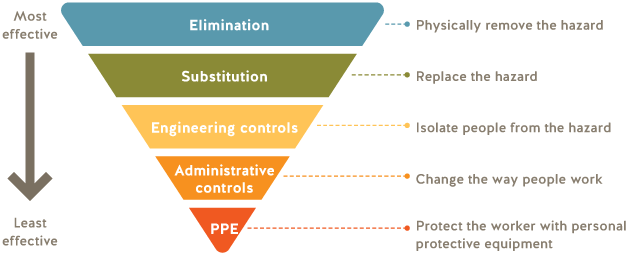Electricity can flow through objects that are touching power lines and can move across a gap from a line to an object that is close by. Incidents may involve cranes, concrete pump trucks, excavators, exterior building installations and maintenance, and dump trucks.
Any work near high-voltage electrical equipment or conductors needs to be carefully planned and carried out to prevent worker contact with electricity.
Before starting work close to high-voltage electrical equipment or conductors (that are exposed or that might become exposed), workers must be informed of:
- The existence, location, and voltage of any high-voltage electrical equipment and conductors
- The procedures that must be followed to ensure their safety and compliance with the Occupational Health and Safety Regulation
Know the voltage
Employers and workers who need to work near electrical lines are required to know the voltage carried in those lines. You can confirm this by contacting the owner of the utility, and then the limit of approach (usually 10 feet or 3 metres) can be determined. The limit of approach or minimum safe distance applies to the worker, materials, or equipment, whichever is closest to the high-voltage line.
General limits of approach
| Voltage | Minimum approach distance for working close to exposed electrical equipment or conductors | |
|---|---|---|
| Phase to phase | Metres | Feet |
| Over 750 V to 75 kV | 3 | 10 |
| Over 75 kV to 250 kV | 4.5 | 15 |
| Over 250 kV to 550 kV | 6 | 20 |
If the minimum distance in the table above cannot be maintained, then an assurance in writing must be obtained using Assurance of compliance with Occupational Health and Safety Regulation, part 19 (form 30M33).
Everyone has a role to play to “Plan for 10”
When starting a new construction project, owners, developers, architects, and engineers play a critical role in planning for the long-term health and safety of all workers involved in the project. Equally as important, employers, contractors, and workers need to understand their responsibilities when working near high-voltage electrical equipment and conductors.
- Owners, developers, architects, and engineers
A workplace must be designed to protect any worker from danger. Owners, developers, architects, and engineers are typically responsible for the overall development and planning of the construction project. - Municipalities
The city reviews any submitted development, demolition, building, or renovation applications, and provides approvals and permits. - Employers
Employers are responsible for conducting a risk assessment and controlling risks. Employers must inform their workers of the potential electrical hazards before they start work near energized electrical conductors or equipment. - Prime contractors
Prime contractors are responsible for coordinating work on worksites with more than one employer and should do everything reasonable to ensure a system or process is in place that promotes health and safety on the worksite including work around high-voltage conductors or equipment. - Workers
Workers are responsible for ensuring their own safety and the safety of others by following safe work procedures.
The hierarchy of controls
When considering control measures to reduce the risk, there's a certain order you should follow. This is called the hierarchy of controls. It's important to follow the hierarchy, as shown below, rather than starting with the lowest level of control measures. While the controls are listed in order of effectiveness, all five types of controls must be considered.

Resources
OHS Regulation and related materials
- OHS Regulation 19.24 to 19.26
- OHS Policy 19.24-1
- OHS Guidelines G19.24.1 to G19.26
Publications
- Assurance of compliance with Occupational Health and Safety Regulation, part 19 (form 30M33)
- Working Safely Around Electricity (book)
- Click or call before you dig (toolbox meeting guide)
Videos and slide shows
- Electrical Safety: Underground Contact
- Electrical Safety: Crane Truck Contact
- Electrical Safety: Ladder Contact
- Worker on Scissor Lift Electrocuted
- A Bright Arc
Incident investigation summaries
- Worker seriously injured when electric arc flash occurred
- Worker falls from ladder when gutter hits high-voltage line
- Metal ladder contacted high-voltage power line
External resources
- Electrical safety (BC Hydro)
- Controlling electrical hazards (OSHA)
